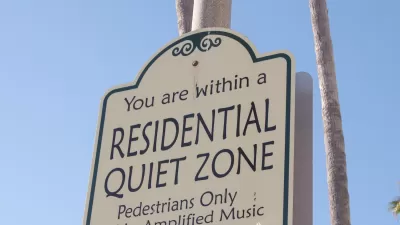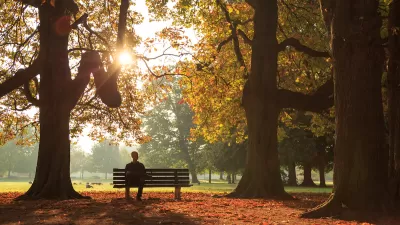Several cities are piloting programs that use machine learning to identify and understand urban noise patterns and enforce noise ordinances.

More cities are taking action to reduce noise pollution and limit vehicle decibel levels, reports Linda Poon, and the process could soon become automated thanks to new sensor technology. A Paris pilot program will install microphones and cameras that can measure decibel levels and help identify the vehicle and driver. "No decibel threshold or fines will be set during the three-month trial period, according to French newspaper Liberation, but it’ll test the potentials and limits of automating the war on sound pollution."
"By now, research has been mounting about the health effects of continuous noise exposure, including links to high blood pressure and heart disease, and to poor mental health." But despite existing noise ordinances, enforcement of vehicle sound limits has been difficult and costly for law enforcement. According to Poon, "Those obstacles have made noise pollution an increasingly popular target for smart city innovation, with companies and researchers looking to make environmental monitoring systems do more than just measure decibel levels."
In New York City, a group of researchers is using machine learning to understand the sources of noise and develop tools that cities and residents can use to get information, understand patterns, and address complaints in excessively noisy areas. With the project already showing promise in Red Hook, where residents were able to use the data to get trucking routes moved away from residential streets, the group hopes to work with the city to implement the project at a larger scale.
FULL STORY: Can Sensor Technology Cut Noise Pollution in Cities?

Planetizen Federal Action Tracker
A weekly monitor of how Trump’s orders and actions are impacting planners and planning in America.

Congressman Proposes Bill to Rename DC Metro “Trump Train”
The Make Autorail Great Again Act would withhold federal funding to the system until the Washington Metropolitan Area Transit Authority (WMATA), rebrands as the Washington Metropolitan Authority for Greater Access (WMAGA).

The Simple Legislative Tool Transforming Vacant Downtowns
In California, Michigan and Georgia, an easy win is bringing dollars — and delight — back to city centers.

DC Backpedals on Bike Lane Protection, Swaps Barriers for Paint
Citing aesthetic concerns, the city is removing the concrete barriers and flexposts that once separated Arizona Avenue cyclists from motor vehicles.

In These Cities, Most New Housing is Under 441 Square Feet
With loosened restrictions on “micro-housing,” tiny units now make up as much as 66% of newly constructed housing.

Albuquerque’s Microtransit: A Planner’s Answer to Food Access Gaps
New microtransit vans in Albuquerque aim to close food access gaps by linking low-income areas to grocery stores, cutting travel times by 30 percent and offering planners a scalable model for equity-focused transit.
Urban Design for Planners 1: Software Tools
This six-course series explores essential urban design concepts using open source software and equips planners with the tools they need to participate fully in the urban design process.
Planning for Universal Design
Learn the tools for implementing Universal Design in planning regulations.
Smith Gee Studio
City of Charlotte
City of Camden Redevelopment Agency
City of Astoria
Transportation Research & Education Center (TREC) at Portland State University
US High Speed Rail Association
City of Camden Redevelopment Agency
Municipality of Princeton (NJ)





























